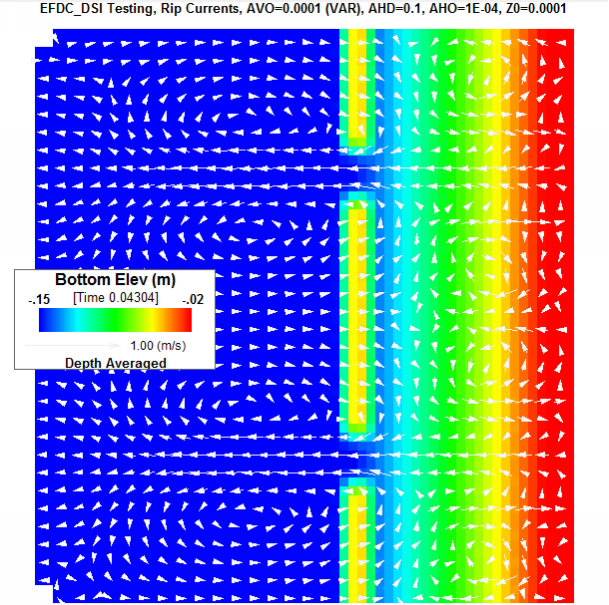...
DSI has extensively tested and verified the ISWAVE=2 option for both EE and EFDC using the RefDif/ShoreCirc modeling of rip tide currents (Svendsen, et. al., 2000). Figure 3 shows EFDC_DSI model results for the rip tide test case. The velocity vectors (in white) have been overlaid on the bathymetry. The velocity pattern and magnitude are similar to what was computed by Svendsen.
| Anchor | ||||
|---|---|---|---|---|
|
Figure 3 Wave generated rip tide currents overlaid on idealized beach.
...
1. Using output for locations option requires the SWAN model to have same grid as the current EE model and uses the group file from SWAN, (SWAN_GRP.INP).
2. Using output for location option uses the data as x, y points. This option should be chosen when SWAN and EE use two different grids and wave data was exported at the locations (x, y) from the SWAN model. The latter option requires two input files: a location file and a table file. These should have been defined and saved out from the SWAN model.
Once these files have been selected the user should select the Import button. Two files will be created: WAVE.INP and WAVETIME.INP for the EFDC model run.
| Anchor | ||||
|---|---|---|---|---|
|
Figure 4 Waves Tab: SWAN Import function when using same grid as EE.



